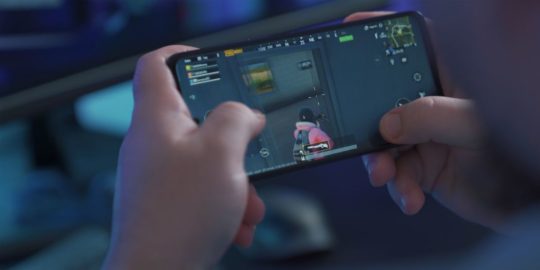Marketers must treat every dollar of their budget carefully while simultaneously trying to make waves in a competitive marketplace. So it’s essential to look for efficiencies across every stage of an app’s lifecycle, avoiding the dreaded app-ocalypse.
LiveOps is a great place to start. Using an intuitive remote configuration system that doesn’t require a lengthy app relaunch process can save time and money. It can also keep an app engaging and relevant, providing the best user experience in the shortest time possible.
So how can you make the most of your LiveOps, and extract the best value for your app spend? On the latest PocketGamer.biz Podcast, managing editor Brian Baglow and his new co-host, Peggy Anne Salz spoke to Larry Hsieh, best known for leading both the LiveOps and events initiatives using Leanplum for his studio’s various casual puzzle free-to-play games.
As Principal Product Manager at MobilityWare, a company with a storied background in mobile gaming, Hsieh has plenty of insight into the flexibility, efficiency, and performance of a LiveOps platform.
LiveOps: Where the Fun Begins
The traditional model of releasing a game is evolving. Rather than the launch of a game in its final form being the endpoint, LiveOps allows for a more iterative process, as developers can edit and tweak in real-time without the constraints of relaunch or approval. Hsieh sees the launch as simply where the fun begins; what follows is the chance to keep the game relevant.
Hsieh talks about the importance of seasonal events and how LiveOps can bring a game to life for players: “If you run LiveOps, you can actually tailor the whole experience.”
Hsieh has described the benefits of using Leanplum’s suite of tools to generate the building blocks of a LiveOps event via remote configuration. Having these tools is more than just intuitive and effective, using remote configuration for LiveOps gives smaller developers the chance to compete with the gaming giants in terms of their marketing and agility, despite working with a much smaller budget.
Hsieh sees the benefits of the cost efficiencies offered by remote configuration: “I don’t have an entire team of people to run LiveOps. I only have one or two people. I have only one artist doing all the art, which is amazing. But then we’re still able to scale.”
Remote configurations also help to avoid one of the key pitfalls in updating a mobile game; updates and relaunches can take time, even in the best-case scenario a day or two, which ups the pressure to have the update perfect. Having controls and variables built helps keep things more fluid.
Hsieh continues: “If you protect yourselves by having master controls, being able to dial up or dial down certain things, then if something goes wrong, then you can actually just go into master controls and patch things out.” This allows a lot of flexibility in A/B testing, getting to the heart of what gamers want and what’s proving popular.
Keeping Gamers Engaged
One of the most interesting cases for LiveOps is the ability to keep the games engaging, to the point where it’s helped MobilityWare revive and rejuvenate a game.
Having flexibility across LiveOps key components is the holy grail for the industry, and an all-in-one solution provides a simple and effective way to ensure consistency and efficiency while not only developing, but also promoting a game update.
Another critical aspect of LiveOps is lifecycle marketing, including the push notifications, in-app messaging, and emails. With an all-in-one solution like Leanplum, Hsieh can oversee this aspect of the process and the technical development. With the possibility of events running weekly, or even daily, communication with the gamer is key to making sure they stay engaged and involved, ensuring they’re aware of the new offers, incentives and rewards available.
The numbers Hsieh has around the efficacy of live events are impressive: “If we didn’t run these events, and we see this in the data, engagements will go down, and you’ll see drop-offs of 20% to 30%.”
For a company that thrives on ease-of-use and wants to “keep events as automated and as easy a setup as possible,” remote configuration allows even smaller developers to scale and segment as required, creating different variables. Hsieh discusses the importance of this functionality: “I want to target this specific user, which is the audience side, and then through the channel, which is the messaging system, I could reach them, but then what do I give them? Then the A/B helps us test all those things out to make sure what works.”
So what’s the key to injecting life into an old game on a budget? Hsieh sees LiveOps as key to making the most of your resources: “It goes back to opportunity costs. Do I have the engineers to build this? … You want to use them most effectively to build very scalable tools.”
Want to learn more about how Leanplum (a CleverTap company) can help your team? Check out the full podcast featuring Larry Hsieh of MobilityWare on the latest PocketGamer.biz Podcast.
Learn More About LiveOps Events
To learn more about LiveOps, check out these additional resources:
- Watch the full webinar with MobilityWare, LiveOps on a Shoestring Budget, where we discuss the inner workings of how they use Leanplum for live events.
- Explore our Gaming Apps Data Science Report to see how specific engagement strategies impact retention and revenue.
- Read our article on How to Increase Player Engagement and Revenue for more insights on boosting overall engagement and monetization in mobile gaming.
- Check out the Product Tour to see Leanplum in action.
- Set up a complimentary personalized demo of Leanplum.




